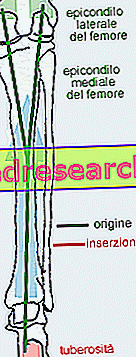Introduction
Dental filling (or filling) is a common dental procedure indicated for restoring teeth damaged by cariogenic processes, restoring their structure, morphology and integrity. The dental filling is always anticipated by the removal of the damage (eg caries) and by the accurate disinfection of the area. Only later, the dentist proceeds by filling (or plugging) the cracks or canaliculi that the bacteria, piercing the enamel and dentin, have caused the tooth.
Indications
The main objectives for which a filling is performed are:
- Treat cavities
- Seal the dental spaces where bacteria could enter
- Prevent a further possible cariogenic process
- Relieve toothache
- Block the root canal in the presence of a severely chipped or broken tooth
The filling of the root canal is a particular filling that is performed, during the devitalization of a tooth, to fill the space in which the dental pulp (which has been removed) usually resides.
It is the duty of the dentist to determine if a tooth requires a more invasive filling or treatment. A small cavity is easily treated by simple obturation, whose duration (of the intervention) varies from 20 to 60 minutes. The more serious cariogenic processes require more time to be carefully filled. Otherwise, caries that have gone deeper and that have invaded the dental pulp need more invasive procedures (eg devitalization or tooth extraction) to remedy the damage suffered.
Curiosity
Dental filling is part of the list of so-called conservative practices. Conservative dentistry is a branch of dentistry specializing in the restoration of carious tooth - or damaged by other factors - after elimination of the underlying cariogenic process. We talk about conservative procedures because the tooth, kept in its own place, is repaired as much as possible, restoring its structural integrity and preventing its extraction.
Toothache
Toothache that lasts over 2-3 days is a warning signal that should prompt the victim to undergo a dental visit. In fact, let's not forget that toothache is one of the main symptoms with which a cariogenic process occurs. When a presumed tooth decay is neglected, the bacteria continue their inexorable attack on the tooth: after having pierced the enamel and reached the dentin, they affect the pulp of the tooth until they trigger pulpitis, dental abscess, and destruction of the tooth and root. In these circumstances, a simple filling is no longer sufficient to remedy the damage caused.
Intervention
After a careful dental check-up in which a cariogenic process is diagnosed, a restoration (filling) is performed only after the underlying damage has been eliminated. If necessary, before filling, the doctor performs an X-ray of the tooth to ascertain the extent of the lesion.
The procedure is normally performed under local anesthesia and is not particularly painful.
Please note
Before undergoing the dental filling procedure, it is the patient's duty to report any episodes of allergy to anesthetic drugs or other allergies (eg latex allergy, nickel allergy, etc.) to health personnel. Furthermore, it is strongly recommended that you inform your doctor if you are taking medication to treat a certain disease, including OTC (without prescription).
Below is a description of how a common filling operation is performed:
- Local anesthetic of the carious tooth: the tooth is "asleep", consequently the patient should not perceive any pain during the procedure
- Short wait (a few minutes) to allow the anesthetic to exercise its therapeutic effect
- Elimination of dental caries (the tooth is cut with special cutters)
- Filling of the groove created in the tooth with special materials (eg amalgams, resins, etc.): in this way, the tooth is clogged and, after just a few hours, it is possible to resume normal chewing.
Types of filling
The tooth can be covered with different types of materials, which differ in terms of composition, cost and prestige. The table shows the types of fillings most used in restoration operations.
| Type of filling | merits | Defects |
Obturation (amalgam) in mercury + silver / tin / copper / other metals  |
|
|
Gold filling  |
|
|
Composite filling (resins) also known as white fillings  |
|
|
Porcelain filling (inlays)  |
|
|
When a cariogenic process damages a large part of the tooth, it is advisable to apply a capsule (special artificial crown, which mimics the part of the tooth protruding from the alveolus) in replacement of the filling.



